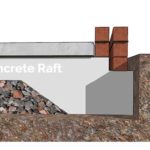We use cookies to make your experience better. To comply with the new e-Privacy directive, we need to ask for your consent to set the cookies. Learn more.
Raft Foundations for Home Extensions Explained
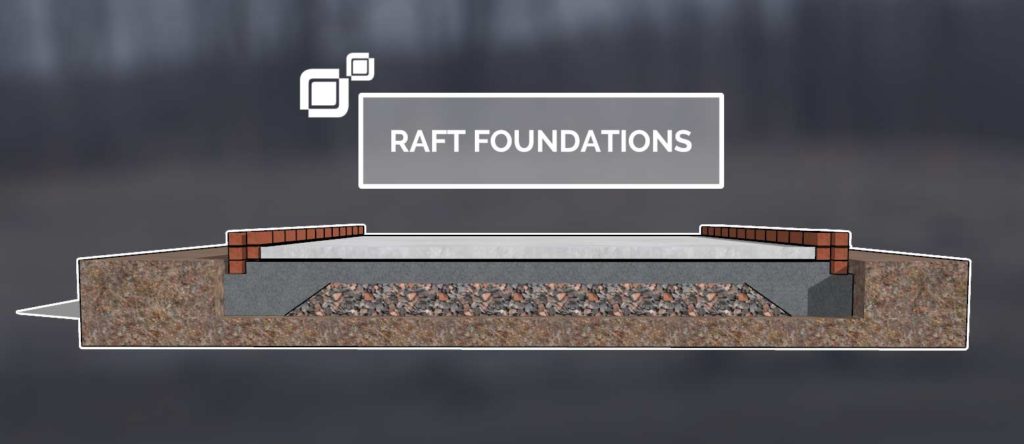
As the base on which your new home extension will sit, its foundations are incredibly important, even if they aren’t the most exciting part of the build project.
If you’re planning on a DIY approach for your extension, or at least for part of it, a good understanding of the various types of foundation is essential.
In this article, we will look specifically at raft foundations, to explain what this kind of foundation is, when it’s appropriate to use one, and how to construct one, to give you, quite literally, a firm footing for your project.
What are raft foundations?
Whether you’re an experienced DIYer or you’re just starting on your first major project, you will no doubt be aware that solid foundations are essential.
However, you may not be aware that there are a number of different types of foundations, each of which has both advantages and disadvantages, depending on the project and the ground on which the extension is to be built.
Raft foundations are a common solution for small home extensions and conservatories, and can be tackled by a competent DIYer, providing accurate measurements are used and due care is taken.
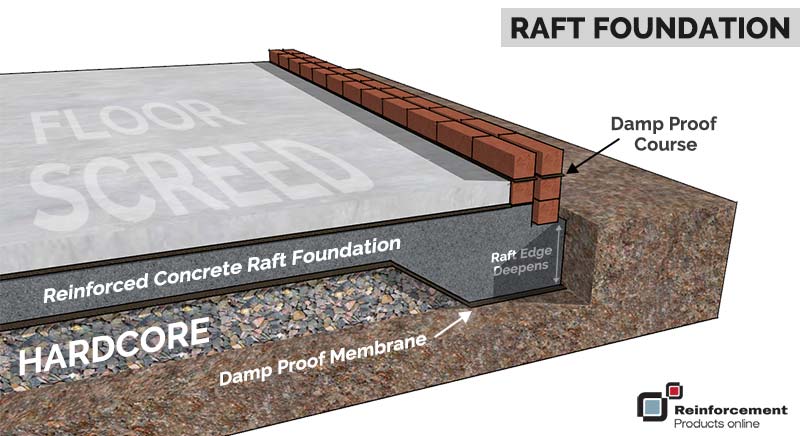
Raft foundations use slabs of reinforced concrete to cover a large surface area, often the entire footprint of the extension.
This approach spreads the structural load over the entire foundation area, and the slab floats on the prepared ground surface, in the same way that a raft floats on water.
Why are raft foundations used?
Raft foundations are relatively inexpensive and fast to put down, when compared with other types of foundation.
Ground excavations are less onerous than trench excavations, for example, and the foundation and floor slab can often be combined, giving significant savings on materials and time.
When should you use raft foundations?
Raft foundations are shallow foundations, and are therefore not suitable for every building project. The advice of a building surveyor or structural engineer should always be sought before committing to a project.
Generally speaking, for domestic projects that have low structural load and a fairly small surface area, raft foundations are ideal.
This assumes that the ground is stable enough to provide the load-bearing capacity required for the build. If the soil is particularly soft, raft foundations may not be appropriate, and an alternative approach would be required, as advised by your surveyor.
Learn more about the building regulations you must adhere to when installing raft foundations.
Type of raft foundations
There are four main types of raft foundation: solid slab rafts, slab beam rafts, cellular rafts and piled rafts.
Solid Slab Raft Foundations
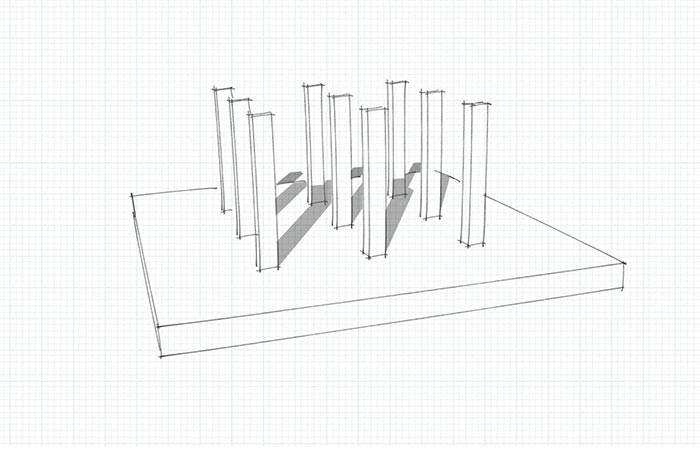
Solid slab raft foundations can be further categorised as flat raft mat, blanket raft, wide toe raft and slip plane raft. Solid slab rafts are perhaps the most common type of raft foundation, and they are suitable for projects where the load-bearing requirements are relatively light and spread evenly across the structure.
Slab Beam Raft Foundations
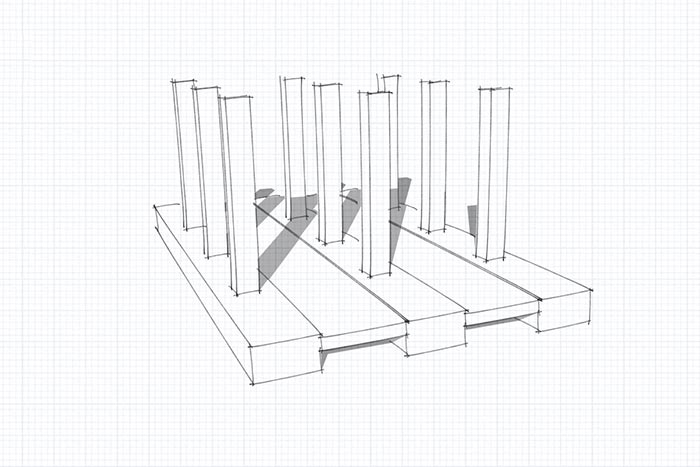
Slab beam rafts are used when the load-bearing points are not distributed evenly through the structure.
N.B. When placing steel reinforcement for raft foundations, be sure to follow advice on lapping mesh reinforcement.
Cellular Raft Foundations
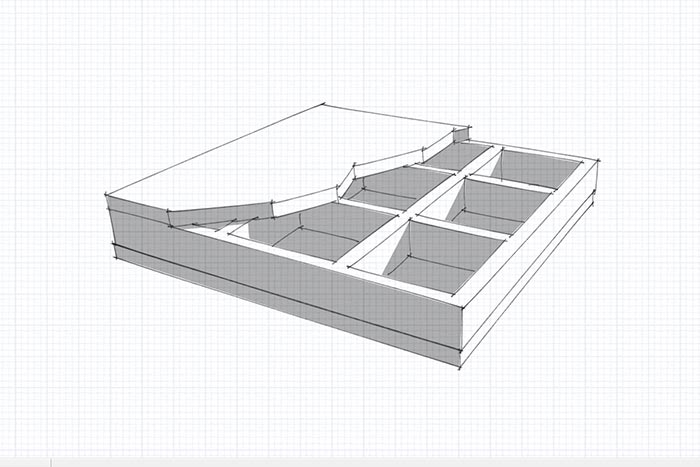
Where heavier loads are anticipated, or where the soil is loose and prone to settlement, a cellular raft may be the most suitable approach, as this type of foundation is much more rigid.
Piled Raft Foundations
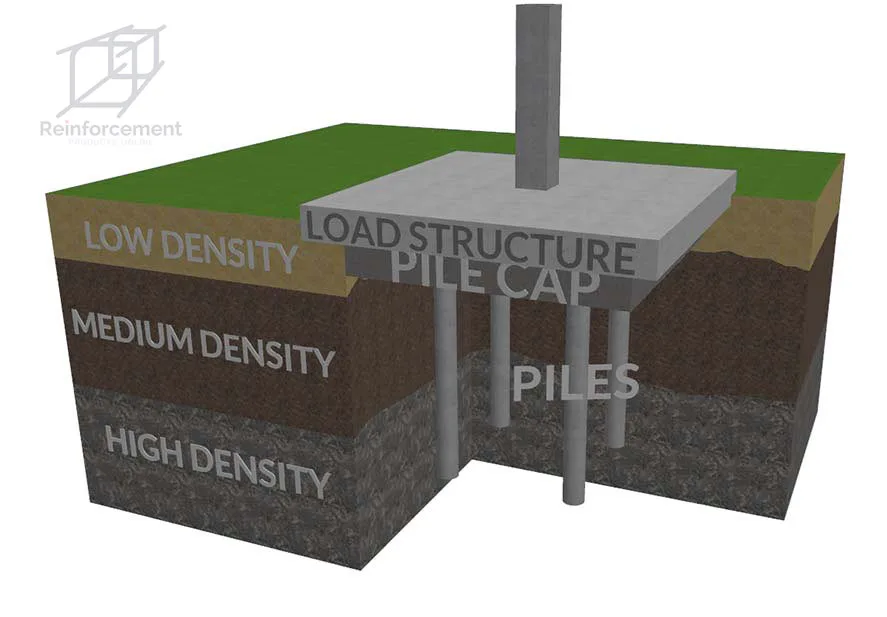
Finally, piled raft foundations might be used where a more traditional slab raft would not fit with the overall design of the building or would not provide the required load-bearing capacity at all points.
Advantages and Disadvantages of Raft Foundations
As they are classed as shallow foundations, raft foundations are fairly quick and inexpensive to construct, as they do not require deep and extensive digging. This makes them an ideal solution for smaller builds such as extensions and conservatories.
Where site access is restricted, a raft foundation could prove easier to complete than traditional trench foundations.
One of the disadvantages of raft foundations is that erosion can occur at the edges of the raft, unless protective measures are taken.
It may also be necessary to install some form of drainage beneath the slab, along with a membrane to protect the base hardcore from becoming clogged by soil and sediment.
Cost of raft extensions
Because every site and building project is different, it can be difficult to suggest likely costs for raft extensions. Factors that influence the overall price might include access to the site, soil stability, the proximity of trees and of course, the size and design of the extension or conservatory.
For those on a budget, it can be worthwhile hiring a mini digger and doing the initial excavations yourself, as well as the hardcore and sand layer.
If you are able to dispose of the excavated soil elsewhere in your garden, or even by offering it for free online, this will also save a significant amount, as waste disposal costs are high.
If you are confident in your abilities and follow the build plans to the letter, it’s possible to do all of the initial work yourself, including laying out the steel reinforcements.
The quantity of concrete required, and the need for this to be of a consistent quality, meaning that it makes sense to get help at this stage of the project, sourcing the concrete from a professional supplier.
How to construct raft foundations for extensions and conservatories
The general steps involved in preparing raft foundations are:
- Soil is removed to the depth specified by the surveyor
- A foundation bed of crushed hardcore, possibly followed by sand, is applied and compacted
- Reinforcement mesh or bars are laid out across the entire surface, utilising spacers to ensure adequate positioning
- Concrete is poured over the reinforcements
Additional reinforcement structures may be added depending on the type of raft foundation that is being constructed.
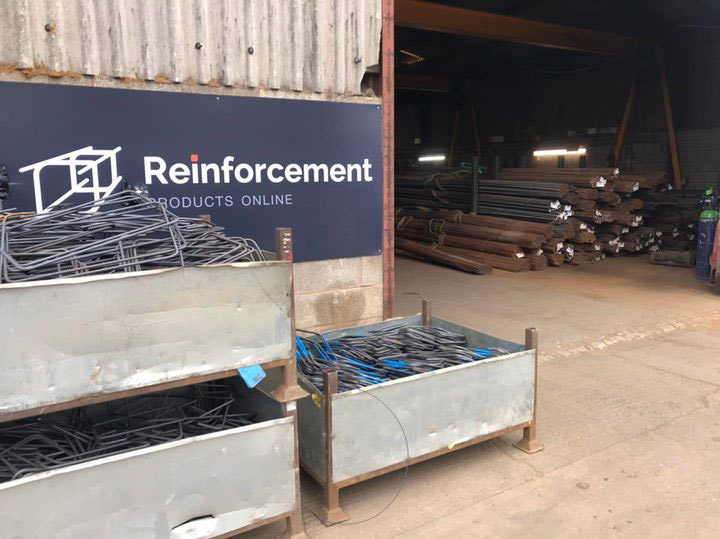
Looking for Steel Reinforcement?
Look no further. Competitive Rates, Experienced Team, Rapid Delivery.
Of course, if you need any guidance or advice on the correct rebar or mesh products for your next construction project, just get in touch with us today for a chat with a member of our friendly and experienced team.
Frequently Asked Questions About Raft Foundations
What is the difference between raft and mat foundations?
There is no difference between mat and raft foundations, the two terms are interchangeable.
What are the 4 types of raft foundation?
- Solid slab rafts
- Slab beam rafts
- Cellular rafts
- Piled rafts.
Do raft foundations need piles?
While the addition of piles is not essential, it can improve the performance of your foundation, by reducing the amount and differential of the settlement and increasing load capacity.
Is a raft foundation shallow or deep?
A raft foundation is a shallow foundation, formed by concrete slabs. It can come in the form of a floating foundation and supports heavy structural loads such as columns and walls.

